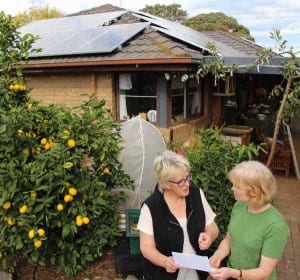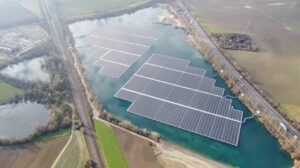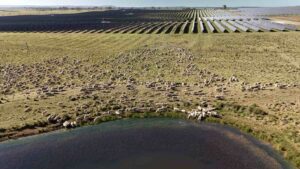The head of network company Transgrid is confident that the construction of new transmission infrastructure can keep pace with the demands of an accelerating energy transition, but conceded there’s room to be more generous in compensating landholders hosting new network infrastructure.
Transgrid CEO Brett Redman spoke with RenewEconomy after launching construction of the Transgrid’s portion of the $2.3 billion Project EnergyConnect transmission project, which will boost network interconnector capacity between New South Wales, Victoria and South Australia.
See: Transgrid starts work on $1.8bn “transformative” renewable superhighway
Redman says the Project EnergyConnect development and other major transmission projects will facilitate the construction of ‘enormous’ amounts of renewable energy capacity throughout the three states.
“I see [Project EnergyConnect] as stage one of a three-stage program; Project EnergyConnect, HumeLink and VNI West,” Redman told RenewEconomy.
“They may open up a whole bunch of regions and the ability to connect enormous amounts of renewable energy for that big energy transition that we’re working towards.
“The more that we enable that move from bringing power from the old coal-based regions, and now start to bring it from the renewables-based regions, the wind and solar regions that are being opened up, it will reduce energy costs.
“It’s very clear going into the future that firmed renewable energy is going to be a cheaper option than thermal energy has been in the past,” Redman added.
Redman says he is confident that the pace of new transmission network infrastructure will keep up with the accelerating shift to renewables, adding that it is better to be early than late when it comes to increasing network capacity.
“In a physical sense, we can absolutely build transmission in time to be ready as this transition to renewable energy happens,” Redman said.
“If I have to choose, I’d rather be ready with the transmission lines a year or two early, rather than a year or two late. I say that unashamedly because I think the risks are very asymmetric.”
“A year or two too early, it’s a bit awkward, a little bit of extra cost, life goes on. Two years too late, the results can be quite dramatic if we have a shortfall,” Redman said.
Redman backs the plan by incoming federal energy minister Chris Bowen to instigate a review into the Regulatory Investment Test for Transmission (RIT-T) process, saying the regulatory environment has room to be streamlined to ensure the network capacity is built to support new renewable generation.
An emerging challenge for new transmission network projects is the prospect of local community opposition, with some communities vocally opposed to the construction of new transmission poles and wires near homes and townships.
Redman says key to the successful development of new transmission network projects will be open consultation with community groups to communicate the benefits of transmission projects.
“At a very local level, it’s about recognising that these transmission projects benefit the many. But they really do hammer the few,” Redman said.
“It’s a big deal putting transmission towers through somebody’s property.
“When we’re building through places, like around Tumut and the like, you’ve got much more densely owned properties, scenic outlooks, and it really affects people.”
ANU researcher Andrew Blakers recently noted that the hosts of transmission projects are paid considerably less than landholders hosting wind turbines.
Redman acknowledged that Transgrid could look to offer impacted properties with more generous compensation for hosting transmission infrastructure.
“I think it’s reasonable, given the benefits that so many of these projects bring, that we should be trying to lean into being a little bit generous with the landowners,” Redman said.
“We’re doing everything we can at that local level, to be respectful, to recognise the impact that it has on people, not pretend it’s not real. To build it as best we can sympathetically and to quietly advocate for improved compensation.
“I think that’s both practical and fair,” Redman added.
Redman, who before joining Transgrid had served as the CEO of AGL Energy, declined to comment on the news that the company would back out of a proposed demerger.
“I’ve got many friends there still, and I feel for them as they go through a lot of change and uncertainty in terms of how the company’s operating,” Redman said.
See also: To triple transmission capacity, landowners and neighbours need to be paid more









